Indiana University Libraries Book Repair Manual
Pamphlet Binder with Pocket
Candidates for this enclosure treatment include pamphlet-type materials which most commonly fall into one of two categories:
- The pamphlet can not be bound by sewing or stapling, due to fragility of its paper.
- The pamphlet should not be bound by sewing or stapling, because it is desirable that the item not be altered.
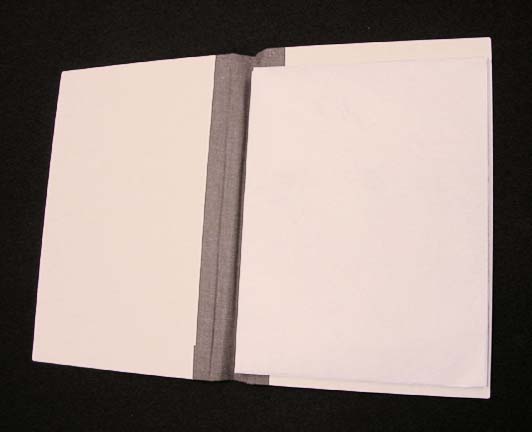
Tools Needed: |
Materials Needed: |
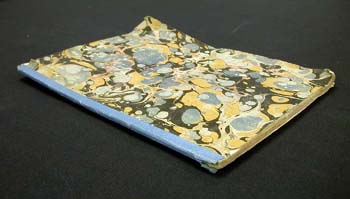 | Our example is an 18th century pamphlet, and we prefer not to alter it. As far as repair treatments, its needs are minor. The paper and structure are good; the cover needs a bit of mending and tape removal, and it would benefit from being flattened at the corners. Being that it needs nothing in the way of repairs that will change its dimensions, we can go ahead and make the enclosure for it and then do the repairs, though we would normally do them first. |
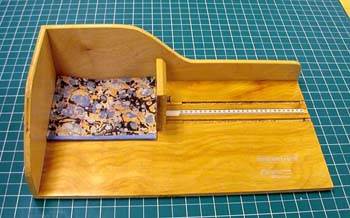 | We begin by measuring the pamphlet in the MEASUREpHASE. First the length, |
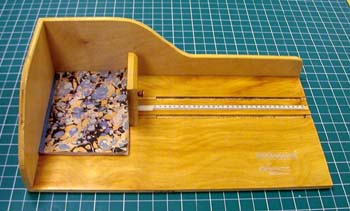 | then the width, |
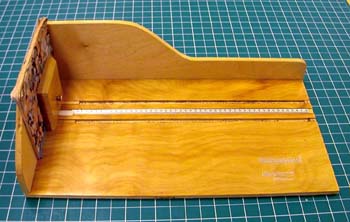 | and the thickness. |
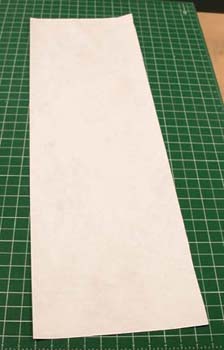 | Several different styles of pockets can be made with a minimum of tools and materials. The illustrations and text given here show one variety used when the thickness of the material being housed is a bit greater than that which an envelope will accommodate.
|
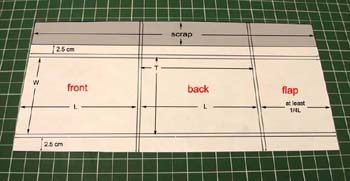 | This illustration shows the layout of the creases and the part of the pocket each panel will become. The shaded area represents the scrap which will be trimmed off the width. Lengthwise, the piece is marked at L, followed by T, another L, and another T. The length of the flap is excessive, but we can wait and trim it a few steps later. In the width, we mark at 2.5 cm, followed by T, then W, another T, and another 2.5 cm. |
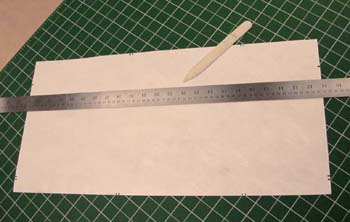 | All creases are made, then the excess width is trimmed off. The creases are made with a bone folder, following a straight edge. |
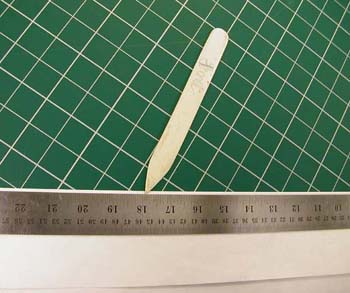 | The Tyvek is folded over double at each crease and the steel ruler is placed on top of it with just a bit showing out from under it along the edge. The ruler is held down firmly and a hard crease is made with the bone folder. |
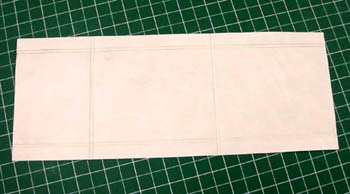 | The creases are finished and the piece looks like this. |
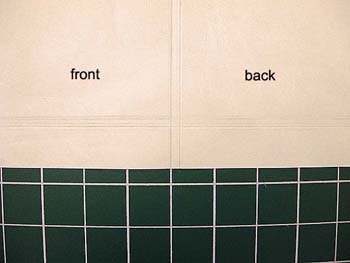 | Now we trim the piece to final shape. We are at the junction of the front and back panels. (See previous illustration of creases and panels for bearings if necessary; orientation of all pertinent images are the same.) |
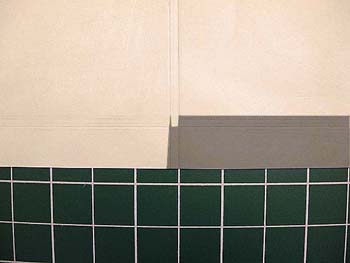 | The shaded area represents the material that will be trimmed away. A cut is made at the inner crease, running the entire length of the back and flap, all the way to the end of the piece. A cut is made at the right hand edge of the front panel, from the inner crease out to the edge. It is slightly angled in the direction shown. The thickness between the front and back panels is trimmed into a small tab as shown. |
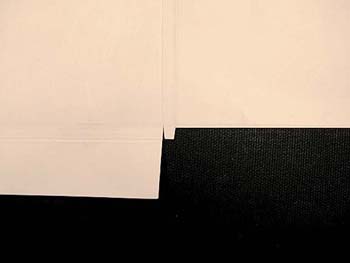 | Here is the piece after actual cutting is done. The other side is trimmed in the same manner. |
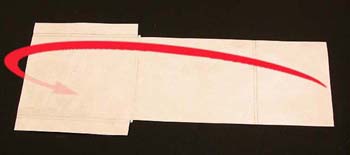 | The piece is now folded over itself in the lengthwise direction so that the flap ends up on the bottom. The pamphlet will be situated on top of the front panel before this is done, but for the sake of illustration the piece is shown without it. |
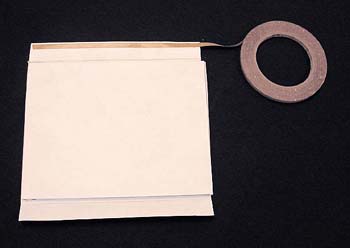 | The pamphlet is now in the pocket. Adhesive is applied to the flaps on the sides; either PVA or double-sided tape, as shown. |
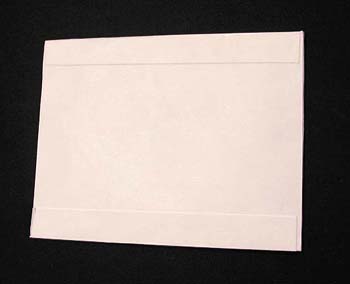 | The flaps are folded over onto the back and fastened down. Again, the pamphlet needs to be in the pocket at this point, so the flaps can be fastened down in their proper locations. This is naturally more difficult to do if the pocket is empty. |
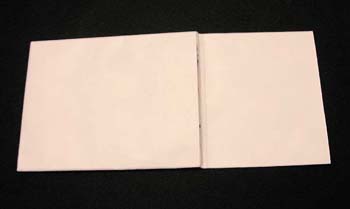 | The pocket is turned over so that the front side is up. |
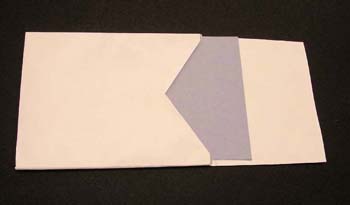 | The pamphlet is removed and a piece of scrap board is put into its place to serve as a cutting mat. A notch is cut out of the front which will allow the pamphlet to be removed from the enclosure easily and without damage. The depth of this notch is not exact but should stop somewhere short of 1/4 the length of the pamphlet. Once this cut is made, the pamphlet is returned to the envelope. |
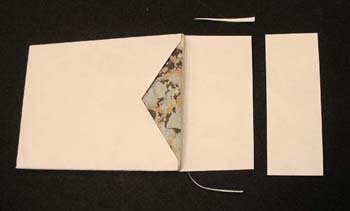 | The flap is now trimmed to about 1/4 the length of the pamphlet. It should cover the notch, plus a bit. The sides are trimmed to a slight inward angle. |
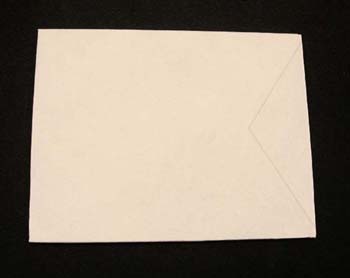 | And here is the finished pocket with the flap tucked in. |
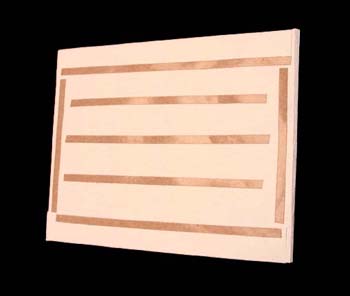 | Adhesive is applied to the back of the pocket. Again, we use double-sided tape. If the material is from a collection that uses security strips and if it is going into a binder that does not have a security strip, it is at this time that the strip would be applied to the back of the pocket. It is not seen because we will be using a binder that does have the strip built in. |
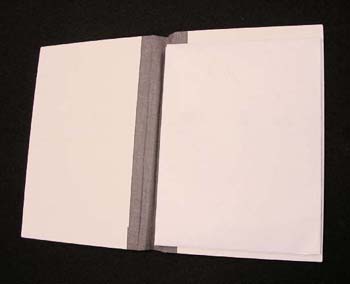 | The pocket is now mounted into the binder, and the construction of the enclosure is finished.
|
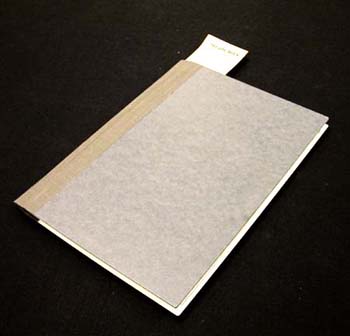 | After applying or re-applying any labeling such as call number label or barcode, the pamphlet is ready to return to the collection. |